Thursday, June 10th 2010

Intel Sandy Bridge Quad-Core Processor Tested
At this year's Computex event, some of the most unexpected exhibits were socket LGA1155 motherboards based on Intel 6-series chipsets, across the board, from virtually every major motherboard vendor. Unexpected, because it's been less than an year since released mainstream derivatives of the Nehalem/Westmere architectures that use the LGA1156 socket. LGA1155 will form the base for performance, mainstream, and value segments of processors based on the upcoming Sandy Bridge architecture, which is a generation successor of Nehalem. With so many motherboard vendors showing off their creations in release-grade conditions, it is obvious that engineering samples of processors to go with them are already on the loose and will land in some enthusiast's hands. It did, in the skillful hands of Coolaler, who wasted no time in putting it through a quick run through popular benchmarks.
Coolaler tested an LGA1155 quad-core processor operating at 2.5 GHz, which CPU-Z can't name but marks it as a Sandy Bridge engineering sample. Among the little that's known about this processor, is that it has a base clock speed of 100 MHz (Nehalem/Westmere processors use BClk of 133 MHz), which means that to achieve 2.5 GHz, it uses a multiplier value of 25. It has all the instruction sets of Westmere including SSE 4.2 and AES acceleration, but also features AVX (Advanced Vector Extensions), a successor to SSE 4.2 which expands the processor's number crunching abilities, and increases performance per MHz. The cache structure up to the second level is the same (32 KB L1I, 32 KB L1D, 256 KB /core L2), but uses a smaller L3 cache at 6 MB (compared to 8 MB on Lynnfield). HyperThreading technology provides the OS with 8 logical CPUs to deal with.The setup was aided with 4 GB of DDR3 memory and ATI Radeon HD 5800 series graphics. The processor crunched Super Pi 1M in 16.349 s, it scored 371 points in CPU Mark. In the multi-threaded Cinebench R11.5 benchmark, the 2.5 GHz chip scored a little under Core i7 860 (reference score). In the Everest CPU Queen, it's about as fast a Core i5 750 from what we could say, but in the Photoworxx test, it outperformed the Core i7 965 XE. In a separate set of tests run on the same hardware albeit in Windows XP, the processor was eight times faster than any other processor in the AES test (because of its native AES extensions), and edged the Core i7 965 XE in memory bandwidth despite having a narrower dual-channel DDR3 IMC.While the results don't show a revolutionary processor, it is intended to be one. Right now it's eligible for the benefit of doubt. The real benefits will be for those models which come with embedded graphics, since the IGP and memory controller will be present on the same die, instead of the present design where the package is an MCM for two dies: CPU and northbridge. When Sandy Bridge releases is a subject of immense speculation. Since motherboard makers unveiled such mature designs of LGA1155 motherboards as early as in June 2010, a market release of the platform may not be too far away.
Source:
Coolaler Forums
Coolaler tested an LGA1155 quad-core processor operating at 2.5 GHz, which CPU-Z can't name but marks it as a Sandy Bridge engineering sample. Among the little that's known about this processor, is that it has a base clock speed of 100 MHz (Nehalem/Westmere processors use BClk of 133 MHz), which means that to achieve 2.5 GHz, it uses a multiplier value of 25. It has all the instruction sets of Westmere including SSE 4.2 and AES acceleration, but also features AVX (Advanced Vector Extensions), a successor to SSE 4.2 which expands the processor's number crunching abilities, and increases performance per MHz. The cache structure up to the second level is the same (32 KB L1I, 32 KB L1D, 256 KB /core L2), but uses a smaller L3 cache at 6 MB (compared to 8 MB on Lynnfield). HyperThreading technology provides the OS with 8 logical CPUs to deal with.The setup was aided with 4 GB of DDR3 memory and ATI Radeon HD 5800 series graphics. The processor crunched Super Pi 1M in 16.349 s, it scored 371 points in CPU Mark. In the multi-threaded Cinebench R11.5 benchmark, the 2.5 GHz chip scored a little under Core i7 860 (reference score). In the Everest CPU Queen, it's about as fast a Core i5 750 from what we could say, but in the Photoworxx test, it outperformed the Core i7 965 XE. In a separate set of tests run on the same hardware albeit in Windows XP, the processor was eight times faster than any other processor in the AES test (because of its native AES extensions), and edged the Core i7 965 XE in memory bandwidth despite having a narrower dual-channel DDR3 IMC.While the results don't show a revolutionary processor, it is intended to be one. Right now it's eligible for the benefit of doubt. The real benefits will be for those models which come with embedded graphics, since the IGP and memory controller will be present on the same die, instead of the present design where the package is an MCM for two dies: CPU and northbridge. When Sandy Bridge releases is a subject of immense speculation. Since motherboard makers unveiled such mature designs of LGA1155 motherboards as early as in June 2010, a market release of the platform may not be too far away.
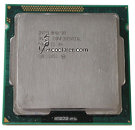
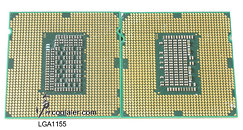
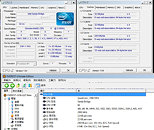
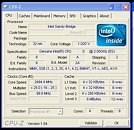
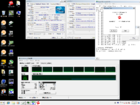
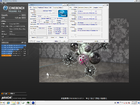
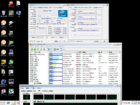
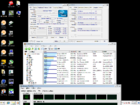
72 Comments on Intel Sandy Bridge Quad-Core Processor Tested
They're plenty to get anybody by that doesn't game. What is the "competition" you speak of? These are on-CPU, not on board, remember.
However, I don't see why they would need to do a socket change, if there are problems with the original 1156 socket, then fix them, but keep the socket and make future boards backwards compatible, like they did with 775.Confused me?:confused:All integrated graphics are pathetic.In the end, it doesn't matter if it is on the CPU or on the motherboard, integrated is integrated. The fact that it is on the CPU just means that there will be less competition, which means suckier products.
And in the end, I agree with you, all integrated graphics suck, they are good for basic office tasks only, and web browsing, and playing back HD video. As long as it can do that, they are all the same to the large majority of end users. Anything more than those tasks, and a dedicated card should be used.
*Walks into corner*
Components were moved, relocated, and so the pin-map changed.
Intel would do well to have a highly efficient main core CPU with the other sockets being able to be populated with HPC or IGP or knights corner targeted instruction sets. We, the user, could then populate the sockets with the feature sets we wanted: more cores, or knights corner, or IGP, or AVX
I find Sandy Bridge tiresome, boring and annoying and a return to overly-proprietary systems or socket formats creating redundancy, increasing wastage, and carbon footprint. If Intel want proprietary profits, I'm fine with that; but not at the expense of waste.
AH CRAP - wtf is 1155!?!?!?"
Stupid frigging intel.
Intels needs to stop changing sockets every 2 seconds and focus more on making there current ones even better.
I own a i5-750 myself and really don't see any reason of why going to iX family or even leaving PII-545, as I did, unless you're an enthusiast....
I would recommend you people to not backup this ridiculous socket change if it proves not to have a big performance difference....
So recommend to your friends that are regular users to stick with 775 or am3 socket.... :D
Don't buy it! :shadedshu
As for my opinion on the matter, sure the scores are an improvement, but the still are no match for my 3.6GHz i7 930, so here are my upgrade plans for when Sandy Bridge comes out:
* New hard drives
* More RAM.
Done. 1366 is epic and will still be epic for a while to come.